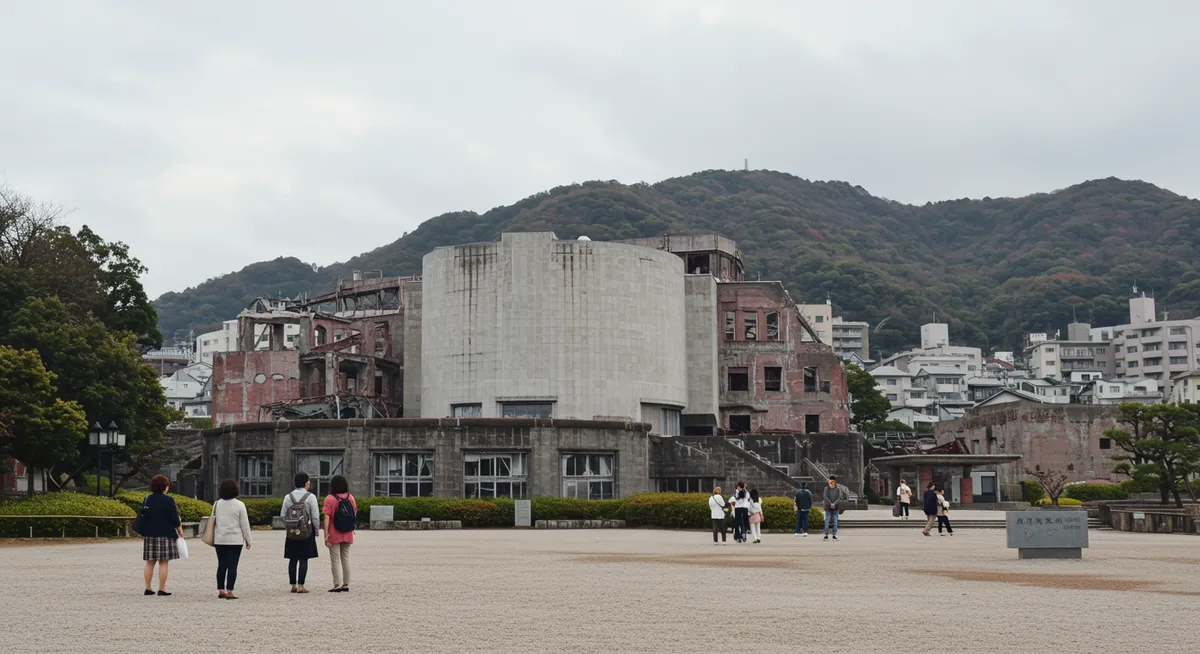
Nagasaki Atomic Bomb Sites Guide
Table of Contents
Want to find the best travel deals for this destination? Chat with our travel hacking specialist!
Get Travel HacksCategory: nagasaki-atomic-bomb-sites-guide
A Comprehensive Guide to Nagasaki's Atomic Bomb Sites
Having personally traversed the solemn grounds of Nagasaki, I understand the profound impact of visiting its atomic bomb sites. This guide is crafted to help you navigate these important historical landmarks with reverence and understanding, connecting you to the city's remarkable story of resilience. As part of your broader Nagasaki travel planning, focusing on these sites offers a crucial perspective on human history and peace. Our aim, aligning with our mission at Plan Vacation Asia, is to ensure your visit is both informative and deeply respectful, providing a clear path through these significant locales.Understanding the Historical Context
Before delving into the specific sites, it’s essential to grasp the historical weight of Nagasaki's experience. On August 9, 1945, the city was struck by the second atomic bomb, profoundly altering its landscape and its people's lives. Yet, from this devastation, Nagasaki has emerged as a beacon of peace, transforming its tragic past into a powerful message for the future. Understanding this context enriches your visit to each Nagasaki atomic bomb site. My own visit truly highlighted the city's incredible spirit of recovery and its dedication to global disarmament. This foundational knowledge helps visitors appreciate the memorials not just as historical markers, but as vibrant calls for peace.Nagasaki Peace Park: A Place for Reflection
The Nagasaki Peace Park stands as the primary symbol of the city's hopes for lasting peace. This sprawling park, built near the hypocenter, features the iconic Peace Statue, whose raised hand points to the threat of nuclear weapons while the open hand signifies peace. Surrounding the statue are poignant art installations donated by countries worldwide, each conveying a unique message of peace and remembrance. Exploring the park allows for quiet contemplation, offering a profound sense of the city's commitment to avoiding future atrocities. I found the sheer scale of the park, and the international contributions, incredibly moving, making it an essential visit on any itinerary of top things to do in Nagasaki.The Nagasaki Atomic Bomb Museum: The Story Unveiled
Adjacent to the Peace Park, the Nagasaki Atomic Bomb Museum offers a harrowing yet essential journey through the events of August 9, 1945. This powerful museum meticulously documents the bombing's immediate impact and Nagasaki's long road to recovery. Exhibits include personal artifacts, survivor testimonies, and compelling visual displays, providing an unflinching look at the human cost of nuclear war. It serves as a vital educational component of any visit to the Nagasaki atomic bomb sites, deepening one's understanding beyond mere observation. My personal experience was that the museum's narrative is incredibly powerful, reinforcing the urgent global message for peace that Nagasaki champions. For comfortable exploration, consider the best time to visit Nagasaki.Hypocenter Park & Urakami Cathedral Remains
Just a short walk from the museum lies Hypocenter Park, marking the precise ground zero of the atomic explosion. A simple black pillar stands as a solemn monument at the epicenter, surrounded by remnants of the bombed Urakami Cathedral wall and trees that survived the blast. Nearby, the restored Urakami Cathedral, once the largest church in the East, stands as a testament to faith and resilience, rebuilt from ruins. Visiting these locations offers a stark, tangible connection to the event, making them critical stops for anyone mapping out a 3-day Nagasaki itinerary. I remember feeling a profound quietness here, a stark reminder of the immense power unleashed.Frequently Asked Questions
How long should I spend at the Nagasaki atomic bomb sites?
Most visitors spend 3-4 hours exploring the main sites, including the Peace Park, Hypocenter Park, and the Atomic Bomb Museum. Allow extra time for quiet reflection or if you wish to delve deeper into specific exhibits.
Are the Nagasaki atomic bomb sites suitable for children?
While the sites are educational, some content, particularly in the museum, can be intense. Parents should use discretion, but the Peace Park offers a more gentle introduction suitable for older children.
What's the best way to get to the Nagasaki atomic bomb sites?
The sites are easily accessible by tram from Nagasaki Station. Take Tram Line 1 or 3 to the Peace Park stop (Heiwa Koen) or the Atomic Bomb Museum stop (Genbaku Shiryokan). It's a convenient and direct route.